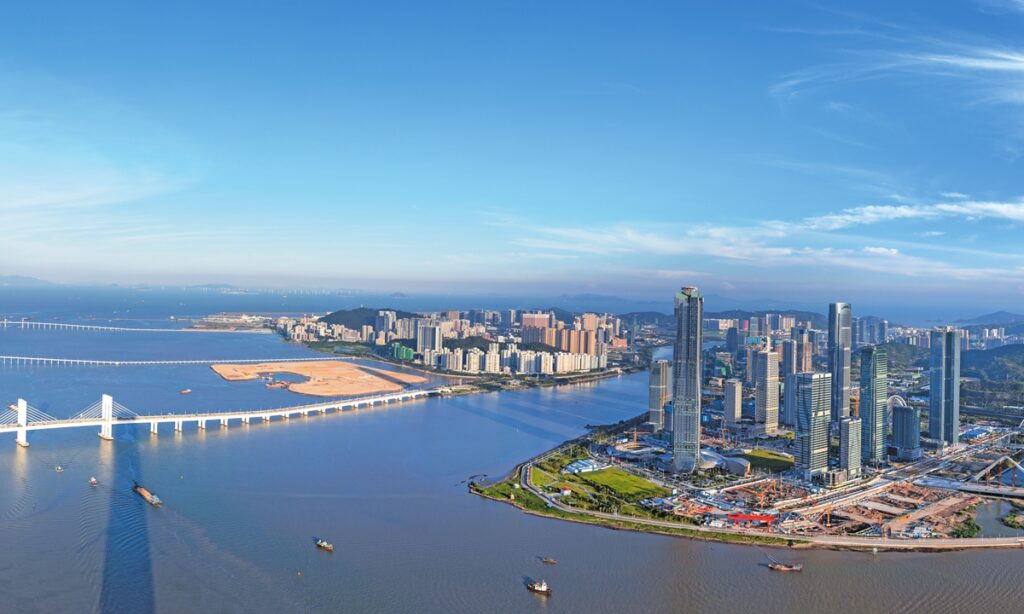The Chinese economy maintained stable expansion in the first half of 2024, with more than half provincial-level regions across the country showing a stepped-up recovery trajectory over the period – which was fueled by robust industrial growth, new drives from the creation of new quality productive forces and comparatively strong external demand, provincial government data showed.
A total of 16 provincial-level regions saw their GDP growth rate higher than the national average of 5 percent in the first half. The output of both South China’s Guangdong and East China’s Jiangsu provinces exceeded 6 trillion yuan ($913.64 billion), ranking top two among all provinces, relevant data showed.
Chinese analysts said the figures prove the resilience of the world’s second-largest economy while showing potential for long-term growth. They expressed firm confidence in the country’s ability to achieve annual GDP growth target of around 5 percent, calling for stepped-up policies to expand domestic demand, especially through increasing residents’ income.
New and green growth
Among the 31 Chinese provinces and municipalities that have released their GDP growth for the first half of the year, 16 recorded a GDP expansion above 5 percent. North China’s Inner Mongolia Autonomous Region took the lead with a GDP growth rate of 6.2 percent, followed by Southwest China’s Chongqing and Southwest China’s Xizang Autonomous Region by both 6.1 percent, according to data released by local governments.
In the first six months, the Beijing-Tianjin-Hebei region in North China, East China’s Yangtze River Delta region and nine Chinese mainland cities within the Guangdong-Hong Kong-Macao Greater Bay Area (GBA) generated total output worth 25.5 trillion yuan, accounting for about 41.6 percent of national total economic output.
All these major economic regions have shown a good momentum in the growth of high-tech manufacturing and new quality productive forces. For example, investment in advanced manufacturing and high-tech manufacturing in Guangdong rose by 18.6 percent and 23.9 percent, respectively. In North China’s Shanxi Province, the investment in high-tech manufacturing jumped by 50.6 percent and investment in new energy power generation rose by 34.9 percent.
“The data are remarkable, indicating a stable and upward trend of the Chinese economy,” Cao Heping, an economist from Peking University, told the Global Times on Monday.
Specifically, the regional economy represented by the GBA has become a locomotive engine leading China’s economy, as the in-depth integration of digital technologies and real economy has given birth to new industries and new business models that dominate these regions’ growth, Cao said.
Zhou Jingtong, deputy dean of the Bank of China Research Institute, attributed central and western regions’ remarkable performance to policy support, complete infrastructure facilities and comparatively lower labor cost. “Take Yibin city in Southwest China’s Sichuan for example. Previously, Yibin was famous for producing Chinese baijiu, but now new energy industry booms in the city, underscoring the positive impact of industrial transfer,” he said.
Zhou added that industrial transfer and the rapid growth of the central and western regions of China will contribute to the country’s balanced economic development.
China’s coastal cities have sound growth basis and large economic volume, but they also face pressure in maintaining relatively high GDP growth rate. These regions should enhance efforts to accelerate the development of new quality productive forces to handle the negative impact of the restructuring of global industrial chains, according to Zhou.
Robust momentum
On the heels of the third plenary session of the 20th Communist Party of China (CPC) Central Committee in mid-July and a meeting of the Political Bureau of the CPC Central Committee last week, various government departments have moved swiftly to arrange economic work for the second half of the year as the authorities strive to accomplish the goals for economic and social development in 2024.
Recently, the People’s Bank of China, the central bank, cut several major short and long-term interest rates, including one-year loan prime rate (LPR) and five-year LPR, in a fresh move to strengthen counter-cyclical adjustments and increase support for the real economy.
Thanks to strong policy support, positive factors are accumulating despite persistent pressure from complex external environment, lack of effective demand domestically and temporary challenges in economic transformation and upgrading, analysts said, expressing firm confidence in the growth prospects for the world’s second-largest economy.
Growth in China’s services activity picked up in July as employment expanded at the quickest pace in nearly a year, a Caixin-sponsored survey showed Monday.
The Caixin China General Services Business Activity Index, which provides an independent snapshot of operating conditions in industries such as retail and tourism, ticked up 0.9 points to 52.1 in July, coming off an eight-month low, it noted.
“In the second half, the Chinese economy is expected to rebound following the implementation of a series of policies,” said Yang Delong, chief economist at Shenzhen-based First Seafront Fund, calling for confidence and patience for the Chinese economy.
Citing that boosting consumption is crucial to bolster the economy, Yang said efforts are needed to increase residents’ income and encourage the development of enterprises so as to create more jobs. Moreover, stabilizing the real estate market and stock market will increase residents’ property income and thereby greatly promote consumption recovery, he said.
Zhou said fiscal policies should step up, and stimulus policies should shift from expanding production to expanding consumption. “From increasing jobs to income, and even direct subsidies are possible methods,” Zhou said.
GT




